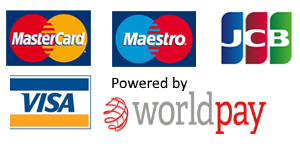Note: This blog was edited on 9 September 2019 following the announcement made by UK Government that the new rules will be delayed by a year and will now begin 1 October 2020.
HM Revenue and Customs are changing the way VAT is accounted for by the construction industry in a bid to tackle missing trader fraud. The new rules will come into force from 1 October 2020.
What is the VAT domestic reverse charge for building and construction services?
From 1 October 2020, businesses supplying construction services to a VAT registered customer will no longer charge VAT. Instead the customer pays the VAT directly to HMRC and recovers the VAT, as usual.
Who will the charge apply to?
The new rules will apply to VAT-registered contractors and sub-contractors who are registered for the Construction Industry Scheme (CIS).
Before applying the reverse charge, the VAT and CIS status of the customer should be established. VAT registration numbers can be confirmed on the European Commission website and the CIS verification system can be used to check CIS status.
Which services are included under the new rules?
The reverse charge will apply to supplies of ‘specified services’, supplied at the standard or reduced rates that also need to be reported under CIS. However, unlike CIS, the reverse charge applies to materials where they are included within a service. ‘Specified services’ will include:
- Constructing, altering, repairing, extending, demolishing or dismantling buildings;
- Installing heating, lighting, air-conditioning, ventilation, power supply, drainage, sanitation, water supply or fire protection systems;
- Internal cleaning of buildings, carried out in the course of their construction, alteration, repair, extension or restoration;
- Painting or decorating the interior or exterior of a building; and
- Services which form an integral part, or are part of the preparation or completion of the above services, including site clearance, scaffolding, landscaping and site restoration.
End users
The reverse charge does not apply to consumers or final customers, even if they are VAT and CIS-registered. If there is uncertainty as to whether the customer is an end user, confirmation should be requested either in writing, an email or a contract.
VAT documents and completing the VAT return
When supplying a service subject to the reverse charge, invoices should continue to show all the information required on a VAT invoice, but should make it clear that the domestic reverse charge applies, using wording such as “Reverse charge: VAT Act 1994 s55A applies” or simply “Reverse charge: customer to pay VAT to HMRC”. The invoice should also state how much VAT is due under the reverse charge or the rate of VAT, but will not include the VAT in the total to pay.
If the reverse charge applies to sales made, no output VAT should be included in box 1 of the VAT return but the net value of the sale should be included in box 6.
If the reverse charge applies to purchased services, the output VAT should be included in box 1 of the VAT return but the net value of the purchase should not be included in box 6. Input tax will be recoverable in the usual way.
What you need to do before 1 October 2020
There are a number of steps you can take to prepare for the new rules:
1. Check whether the reverse charge will affect your sales, purchases or both.
2. Ensure your accounting systems and software are updated to apply the reverse charges.
3. Ensure your accounts staff receive training in how to apply the reverse charge.
4. Plan for any impacts on cash flow.
HMRC have indicated that they will apply a “light touch” in dealing with reverse charge errors made in the first six months of the new rules.
This blog was provided by Lorna Overstall at Wilson Sandford. She will be presenting on this topic at our Autumn Conference on 24 October, you can buy your tickets here (open to all, not just NAS members). In the meantime if you have any questions, please email her directly on lorna.overstall@wilsonsandford.co.uk.


